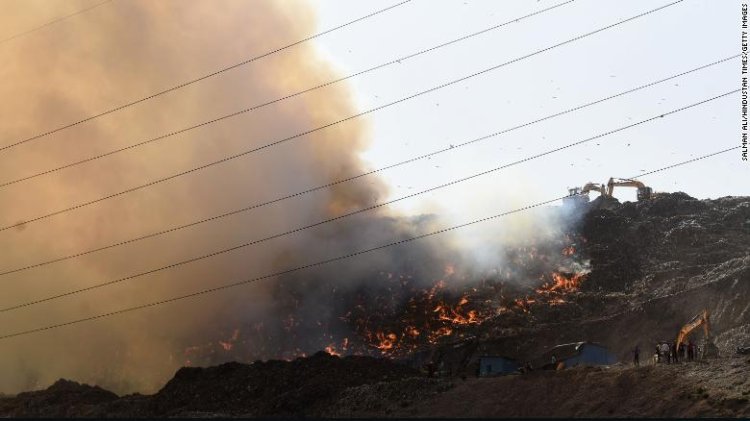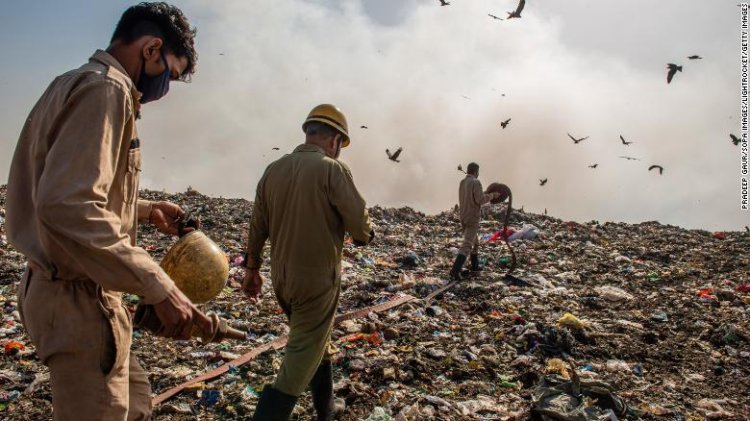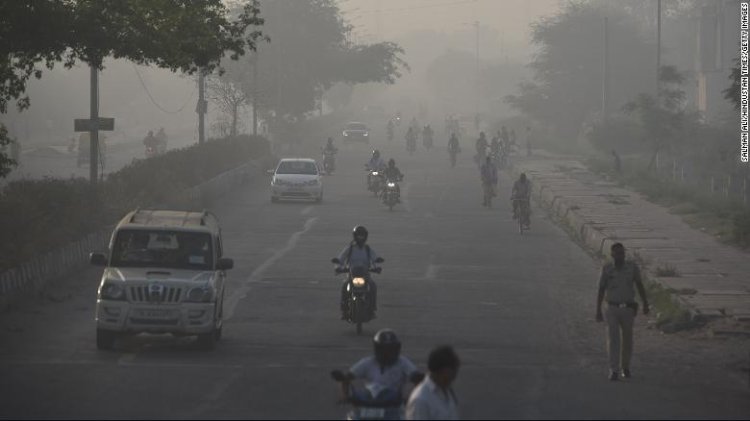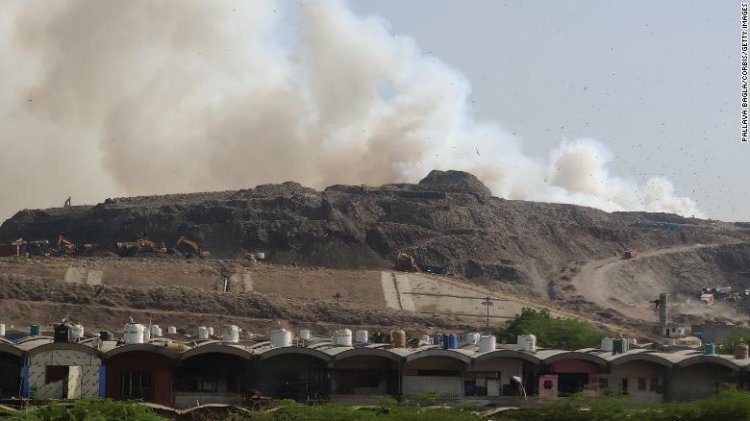As poisonous gases fill the air, Indian firemen battle a landfill fire in Delhi.
According to the government's Central Pollution Board, waste is not processed in most Indian cities, and trash is sometimes simply burned in open dump yards on the roadways.

Firefighters in India's capital said Wednesday that they are nearing the end of a fire at a dumpsite that has been blazing for over two days, engulfing the neighborhood in toxic smoked choking inhabitants.
According to Atul Garg, the city's fire services director, the fire broke out Monday in the Ghazipur landfill east of New Delhi. The cause has not been determined, but flammable gases from decomposing rubbish can spark fires, he added. The day the fire broke out, temperatures in Delhi reached around 40 degrees Celsius (104 degrees Fahrenheit).
While the fire is mostly out, two firefighters are still on the scene to put out minor flames and thick smoke, according to Garg. Police have opened an investigation into the cause of the fire, he added.

About a dozen firefighters were dispatched to the location, according to Garg, but containment efforts were hampered by precariously positioned waste mounds and uneven ground.
"Because this isn't a concrete floor, you won't be able to walk on it. When you tread on a hole and fall through, you never know what may happen "He went on to say that there were no water sources nearby to put out the fires. He explained, "Waste, plastic, cloth... once it catches fire, it keeps blazing."
The fire broke out a week after IQAir, a global air quality monitoring organization, ranked New Delhi as the world's most polluted capital. The city has been afflicted by a throat-searing, acrid cloud that can cause health problems for years.
 According to local media reports, several individuals living near the Ghazipur landfill have had trouble breathing, itchy eyes, and sore throats since Monday.
According to local media reports, several individuals living near the Ghazipur landfill have had trouble breathing, itchy eyes, and sore throats since Monday.
The air is shrouded in dense, black smoke that has eclipsed the sun, according to video and images were taken at the scene. Thick smoke blanketed busy highways near the landfill, making visibility impossible.
According to the government's Central Pollution Board, waste is not processed in most Indian cities, and trash is sometimes simply burned in open dump yards on the roadways.

The 70-acre (283,280 square meters) Ghazipur landfill has developed into a startling, towering heap of waste, inching as high as the 73-meter (240-foot) Taj Mahal since it opened in 1984. According to the New Delhi fire service, more than two dozen fires have erupted at the location since 2019.
According to a 2017 assessment by the environmental group Climate and Clean Air Coalition, it accepts between 1,800 and 2,000 tons of rubbish every day, making it one of three landfills in the area (CCAC).
The Ghazipur landfill's trash capacity was exceeded in 2002, and officials have been seeking ways to address the problem ever since, with environmental groups pleading with the government to address the matter as soon as possible.

 Boakyewaa Lawrencia
Boakyewaa Lawrencia 



































